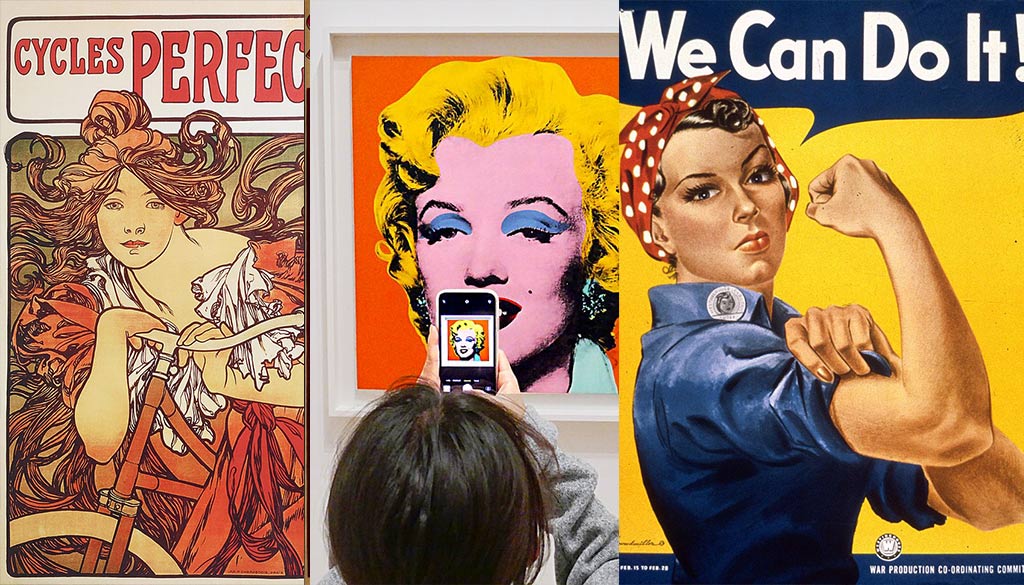
Historical Posters: A Look at Advertising Art Through the Decades
Share the article
Advertising posters have long been a reflection of the zeitgeist, cultural trends and technological advances. In this article, we take a deep dive into history to explore how advertising and posters have evolved from the early 20th century to the present day.
The Early Years of the 20th Century: Art Nouveau and the Birth of Modern Advertising
In the early 20th century, the Art Nouveau style was dominant in advertising posters. Characteristic of this era were the elegant, curvy lines and organic shapes, often with romantic and natural motifs. Famous artists such as Alphonse Mucha and Henri de Toulouse-Lautrec contributed iconic works that not only promoted products and events, but also became works of art in their own right.
The 1920s and 30s: Art Deco and the Great Depression
Art Deco took over the baton with its geometric precision and luxurious aura. This era saw a blend of optimism and modernity with a more austere and stylized aesthetic. Advertising posters from this period tended to use strong, bold colors and were often inspired by the Industrial Revolution and the Machine Age.
World War II: The Age of Propaganda
During the 1940s, as the world was dominated by World War II, posters became a powerful propaganda tool. They were used to boost national morale, recruit soldiers, and encourage the war effort. Famous examples include the British “Keep Calm and Carry On” poster and the American “We Can Do It!” poster.
1950s and 60s: Pop Art and Cultural Upheavals
The post-war period and into the 1960s saw an explosion of pop art. This movement embraced mass culture and used advertising posters to question conventional artistic norms. Andy Warhol and Roy Lichtenstein are two prominent artists from this era whose work often bordered on advertising and high art.
1970s and 80s: The Computer Age and Digital Art
With the rise of computers and digital technology, advertising art changed again. Designers and artists began to experiment with digital graphics, leading to a new era of innovative and sometimes psychedelic design. This period also saw a rise in political and socially conscious advertising.
The 1990s and beyond: The Internet and globalization
Since the 1990s and with the rise of the internet, advertising posters have become increasingly global and multifaceted. Digital art and graphics have taken even greater strides, and advertising posters have become a mix of traditional techniques and modern digital methods. Social and environmental issues have become increasingly common themes.
Present and future: Sustainability and digital revolution
In today's society, sustainability and environmental awareness are central themes in advertising posters. At the same time, the digital revolution continues to influence how advertising art is created and distributed. Augmented reality (AR) and interactive posters are just a few examples of how technology can shape the future of advertising art.
Advertising posters are more than just advertising. They are time capsules that capture the essence of their time. By exploring the history of these works of art, we can gain a deeper understanding of how our culture and societies have developed and changed over the years.

